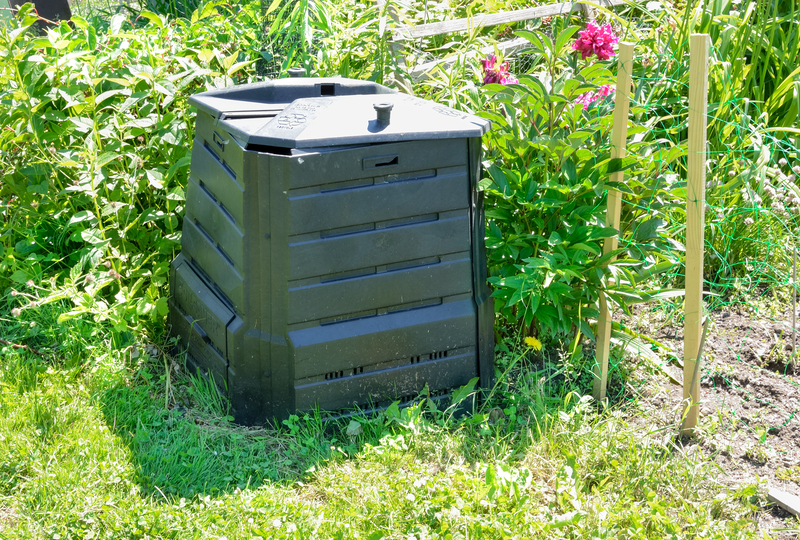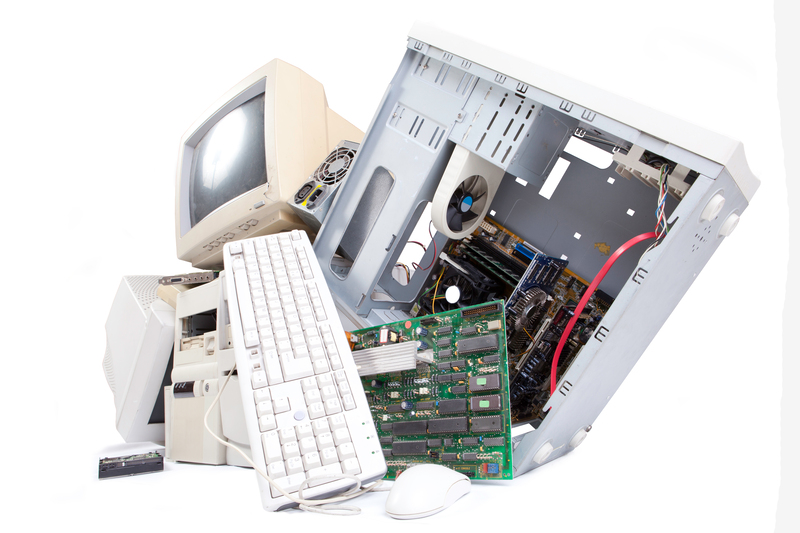Smart Ways to Dispose of Used PPE Without Harming the Environment
The surge in personal protective equipment (PPE) usage in recent years--due to the COVID-19 pandemic and wider public health initiatives--has greatly increased the volume of disposable masks, gloves, gowns, and face shields entering the waste stream. Concern is growing about the environmental impacts of improperly discarded PPE. How can we dispose of used PPE responsibly and sustainably? This comprehensive article highlights practical, innovative, and eco-friendly methods of PPE disposal that protect both public health and our planet.
Understanding the Environmental Impact of PPE Waste
Every day, millions of masks and gloves are discarded worldwide. Unfortunately, much of this single-use PPE finds its way into landfills, incinerators, and even natural environments like rivers and oceans. PPE litter poses significant ecological and health hazards:
- Plastic Pollution: Most PPE items are made from non-biodegradable materials like polypropylene and vinyl, which persist in the environment for decades.
- Wildlife Threats: Discarded masks and gloves can entangle animals or be ingested, often fatally.
- Microplastic Formation: As PPE degrades, it breaks down into microscopic particles, contaminating soil and water.
- Contaminant Spread: Infected or contaminated PPE can spread pathogens if not properly disposed of.
It's crucial to adopt sustainable PPE disposal solutions that minimize environmental harm. Let's explore practical strategies that everyone can implement.

Guiding Principles for Eco-Friendly PPE Disposal
Before delving into specific methods, let's outline the pillars of smart PPE waste management:
- Reduce: Minimize unnecessary use of disposable PPE whenever possible.
- Reuse: Opt for reusable PPE where safety allows (e.g., washable masks).
- Recycle: Safely divert PPE items to approved recycling schemes.
- Contain: Ensure used PPE is securely contained before disposal.
- Responsibly Dispose: Follow guidelines for safe, legal, and environmentally sound PPE disposal.
Innovative and Smart Ways to Dispose of Used PPE Without Harming the Environment
1. Participating in PPE Recycling Programs
One of the smartest ways to deal with used PPE waste is to utilize specialized recycling schemes. Some companies and organizations have developed collection and recycling systems for masks, gloves, and even gowns.
- TerraCycle PPE Recycling: TerraCycle offers Zero Waste Boxes that safely collect and recycle disposable masks, gloves, and protective eyewear. The waste is cleaned, melted, and turned into raw materials for new products.
- Hospital PPE Recycling Initiatives: Some healthcare facilities have partnered with recyclers to process PPE waste into construction materials like plastic lumber or new plastic products.
- Local Government Schemes: Check with your municipality for pilot PPE recycling projects; these are expanding in many communities.
Always ensure PPE is free from heavy contamination before recycling. Single-use PPE that is highly contaminated with bodily fluids or hazardous substances should not be recycled with standard recyclables.
2. Choosing Reusable PPE Options
A proactive way to reduce PPE waste is by selecting reusable alternatives when safe and appropriate.
- Reusable Masks: Made from cotton or synthetic blends, these can be washed and reused dozens of times, cutting down on discarded masks.
- Washable Gowns and Aprons: Healthcare and industrial users can opt for garments that withstand high-temperature laundering.
Tip: Follow manufacturer instructions for sanitizing and caring for reusable PPE.
3. Safe and Responsible Disposal in Household Waste
For PPE that cannot be recycled or reused--such as contaminated masks, gloves, and wipes--the safest route is to dispose of them in regular household waste, not the recycling bin.
- Contain It: Place used PPE in a secure, sealable bag to prevent contamination and littering.
- Don't Litter: Never discard PPE on the street, in parks, or in water bodies.
- Don't Flush: Never flush PPE products like masks and gloves--they clog sewer systems and harm aquatic ecosystems.
Mark the bag as 'PPE waste' if required by local laws, and always wash your hands thoroughly after handling used PPE.
4. Supporting EPR (Extended Producer Responsibility) and Take-Back Schemes
Many governments are considering or have implemented laws demanding that manufacturers take back used PPE for proper disposal or recycling. These "take-back" or extended producer responsibility (EPR) programs reduce the burden on municipal landfills and ensure specialized waste management.
- Return used PPE to pharmacies or collection points if available in your area.
- Encourage workplaces and institutions to participate in EPR programs.
Contact your local authorities or PPE suppliers to inquire about available EPR or take-back options.
5. Community PPE Collection Drives & Proper Waste Segregation
Organizing community collection drives for used PPE can help prevent waste from ending up in nature. These drives promote proper segregation and centralized disposal, ensuring that CDC or WHO guidelines are followed.
- Work with local volunteers to set up dedicated PPE waste bins in public areas.
- Arrange safe transportation of collected PPE to authorized disposal or recycling facilities.
What to Avoid When Disposing of PPE Responsibly
- Never burn PPE at home. Incineration by unapproved facilities releases toxic substances and greenhouse gases.
- Don't mix PPE with regular recyclables. This can contaminate recycling streams and pose risks to workers.
- Avoid illegal dumping. Littering PPE not only pollutes but is often subject to fines.
- Be mindful of public bins. Only use them if they are marked as PPE waste containers.
Exploring Biodegradable PPE Options
In response to PPE waste issues, researchers and manufacturers are developing biodegradable and compostable PPE using sustainable materials such as plant starch, PLA (polylactic acid), and bio-based polymers.
- Biodegradable masks and gloves: These decompose more quickly in composting conditions compared to traditional plastics.
- Compostable face shields: Some shields are made with plant-based films and can be industrially composted.
Check labeling to ensure the product is certified compostable and follow guidelines for composting facilities--do not compost medical-grade contaminated PPE at home.
The Future of PPE Waste Management: Scientific Progress & Innovations
Environmental scientists and innovators are working toward smarter solutions for PPE waste:
- Advanced PPE recycling technology: New techniques safely break down complex polymers into reusable raw materials.
- PPE-to-Energy: Some facilities can convert non-recyclable PPE waste to energy using advanced, clean incineration methods with emissions control.
- Biodegradable PPE research: Ongoing studies aim to make future PPE as effective as synthetics but environmentally benign upon disposal.
How You Can Make a Difference--Personal Habits Matter!
Individuals play a key role in sustainable disposal of PPE. Here are **easy actions** you can take every day:
- Use reusable masks after ensuring they meet safety requirements.
- Educate friends and family about the importance of proper PPE disposal and the hazards of littering.
- Support local businesses and institutions that prioritize eco-friendly PPE procurement and responsible waste management.
- Participate in local cleanup events to remove PPE litter from your community.
- Advocate for government support and funding toward PPE recycling programs.

Smart Ways for Businesses and Institutions to Manage Used PPE
Organizations have added responsibilities--and opportunities--to lead by example in **managing PPE waste responsibly**:
- Install clearly marked PPE disposal bins throughout all premises.
- Work with certified waste management companies for safe transport and disposal or recycling of used PPE.
- Adopt PPE waste tracking systems for regulatory compliance.
- Provide training for staff and visitors on proper PPE disposal.
- Switch to sustainable or reusable PPE whenever safety permits.
Conclusion: Every Piece of PPE Disposed Responsibly Protects the Environment
In summary, smart PPE disposal without harming the environment is achievable through conscious choices and community effort. By recycling whenever possible, using reusables, participating in take-back schemes, and staying informed about new solutions--including biodegradable PPE and scientific innovations--we can all help reduce the ecological footprint of essential protective gear.
Remember: The fight against environmental pollution is ongoing, and proper PPE waste management is a vital part. Each step--big or small--toward responsible disposal preserves our planet for future generations.
Share these tips with your network to promote smart, sustainable PPE disposal and build a cleaner, healthier world.
